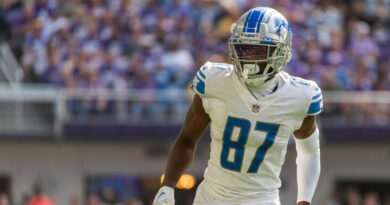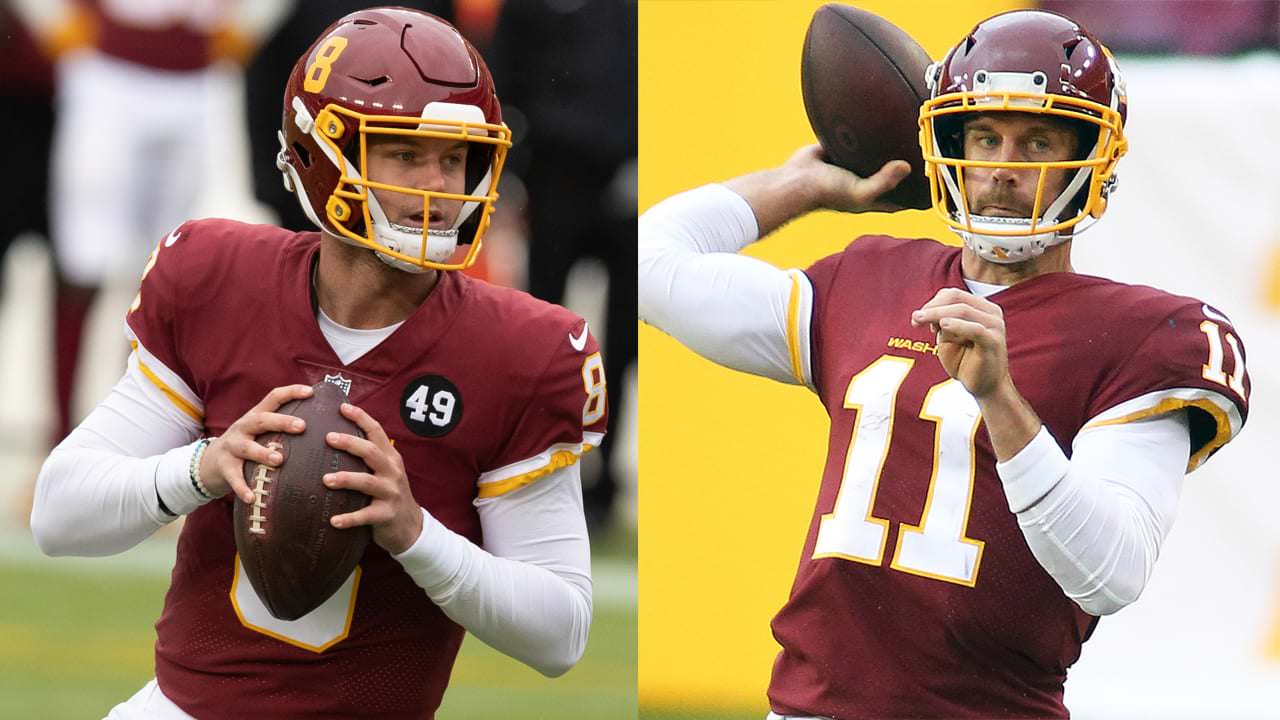2024 NFL Draft: Ranking the top-10 WRs post-combine, with Malik Nabers still No. 1, Texas players on the rise
They say many times you need to go back to the tape after the NFL Scouting Combine. So, I went back to my scouting gradebook and made adjustments to my grades based on what transpired inside Lucas Oil Stadium in Indianapolis.
Here’s what I mean by this: If a prospect measures in differently than I had “graded” — because for receivers, size is a trait — I tweak that category. If he runs faster or slower than expected, “speed” gets boosted or downgraded in that category. For as much as I completely understand that “timed speed” and “play speed” can be different. I trust the numbers more than my eyes to make an evaluation.
And now, all my combine adjustments are complete. Here is my new top-1src receiver rankings for the 2src24 NFL Draft.
1. Malik Nabers (LSU)
- NFL comparison: Brandon Aiyuk
Nabers didn’t even weigh-in at the combine, so I’m awkwardly beginning this “combine-adjusted” rankings with a wideout who has yet to get a quantifiable athleticism adjustment in my scouting gradebook. It’s all film with Nabers, and said film is electric.
The LSU star gets from src to 6src as fast as any receiver I’ve seen at his listed size of 6-foot and 2srcsrc pounds. Even if he’s a little smaller than that, no worries in today’s NFL, which has seen the small, light receiver thrive. He’s unfathomable after the catch and tracks the football deep so naturally. The only negative one could possibly take from a Nabers’ film session is he didn’t run many routes with the Tigers, but even that isn’t nearly as important as it was even 5 to 1src years ago. This is a rocket ready for lift off in the NFL.
2. Marvin Harrison Jr. (Ohio State)
- NFL comparison: Julio Jones Lite
MHJ did get a minor combine adjustment in my “size” category at the receiver spot. No, he wasn’t drastically smaller than expected. His arms were much shorter than we all expected, though. Minor ding, but a ding nonetheless for the previously “un-dingable” receiver prospect. His 77 1/4-inch wingspan tied for the 12th-longest in this class, just hinting that Harrison’s catch radius isn’t quite as big as we thought.
I comp him to Julio Lite because, like the future Hall of Fame receiver, Harrison is a sculpted, intimidating outside presence with route-running chops who erupts down the field on verticals and has the plus concentration and body control to find the football on those deep routes. He’s not quite as dynamic after the catch as Jones was — nor Nabers in this class, the latter of which speaks to why he’s at No. 2 in my receiver rankings this draft season. But make no mistake, Harrison is instant-impact, high-floor and high-ceiling guy.
3. Rome Odunze (Washington)
- NFL comparison: DeVante Parker
Odunze calmed my pre-combine concerns with speed and flexibility by running a 4.45-second 4src-yard dash at over 6-foot-2 and 212 pounds and posting an electric 6.88-second three-cone time. Had to adjust his speed and ability to separate at the next level. Now, you may be thinking: how can a three-cone help a receiver’s separation score? With Odunze, it wasn’t a lack of route-running nuance that I thought would hurt his ability to get open. It was all about flexibility to quickly break off the top of his route stem, and now I know he has elite-level short-area quickness for his size. That matters.
While his arms were shorter and his hands were smaller than I expected, which of course led to a minor adjustment, Odunze had zero issues snagging the football in college. To go 21 of 28 in contested-catch scenarios is flat-out insane. While we all like to say that the best rebounders make those 5src-5src situations feel like 8src-2src in their favor, the truth is, most even elite-level “rebounders” are in the 5src-6src% range. Odunze was 75% successful in 2src23 and rarely recorded a drop. Plus, I love his sneaky contact-balance-based YAC skill. Odunze’s combine made him grow on me. I trust numbers more than my eyes. He jumped from No. 5 before the combine to No. 3 in these rankings.
4. Brian Thomas Jr. (LSU)
- NFL comparison: Lighter Josh Gordon
Gordon was freaky in that he was a large, but smooth glider down the field. Those are the same vibes I got while watching Thomas. He’s not stiff, and when he shifts gears, he was consistently running past SEC cornerbacks, which is always eye-opening. The in-traffic ability is very good, as are his skills with the ball in his hands, but he’s best when simply mashing the turbo button.
I knew Thomas was fast, but I didn’t know he was 4.34 seconds in the 4src-yard dash fast, so he got a combine bump in the speed department. And with nearly an 8src-inch wingspan, the LSU star has an enormous natural catch radius. Never know quite how long a prospect will be until they get measured during the pre-draft process, and Thomas got an adjustment in the size department, too, because length is vital for receivers.
T5. Adonai Mitchell (Texas)
- NFL comparison: Javon Walker
Believe it or not, there are still some 2srcsrc2 Javon Walker pre-draft scouting reports available online. The size, explosiveness, and downfield specialty on those reports reminded me of what I have written in my Mitchell scouting evaluation. Beyond that, I found another parallel. One of the knocks on Walker as a prospect was he only had one year of major production — in 2srcsrc1 when he amassed 944 yards on a mere 45 catches at Florida State. The same is true for Mitchell — 38 catches across two seasons at Georgia before setting career highs across the board in 2src23 at Texas.
Mitchell is a large, electric, downfield burner with super-smooth movement skills as a route-runner and tremendous hands. He’ll only be 22 years old in October. Mitchell’s arrow is pointed skyward.
T5. Xavier Worthy (Texas)
- NFL comparison: Darnell Mooney
Huge elevation for Worthy, who was, yes, worthy of it after breaking the combine record in the 4src-yard dash. A decade ago, I would’ve had many red flags about the Texas burner’s size. But the game and the position have evolved. Offensive coordinators have devised a million ways to get smaller, lighter receivers free releases — if they struggle with press early on — and the explosive play is king in the NFL.
But a boost due to his speed wasn’t the only upgrade Worthy received. At nearly 6-foot and 165 pounds, his 74 1/4 inch wingspan was relatively long. Longer than the likes of his much larger teammate Jordan Whittington, Florida’s Ricky Pearsall and Georgia’s Ladd McConkey. Worthy plays a touch bigger than his size, too, on occasion bouncing off tacklers to find extra yardage after the catch. That type of legit contact balance is rare for a speedster as light as Worthy and nicely rounds out his explosive game.
7. Javon Baker (UCF)
- NFL comparison: Stefon Diggs
Baker does it for me. Everything about his game, I love. He has shake at the line of scrimmage to defeat press, subtleties in his routes to gain extra separation, awesome flexibility — which is the opposite of being stiff, and adjective no receiver wants tied to his name — and he jumps like a McDonald’s All-American basketball recruit when the ball is thrown above his head.
Having written that glowing summary of Baker’s game and my adoration of it, he did drop in my rankings with a lowered grade in the speed department. I talked to Senior Bowl Executive Director Jim Nagy at the combine who told me during the season, scouts he conversed with said the one problem they had with Baker’s game was speed. Turns out they were right. Baker isn’t woefully slow, but a 4.54-second 4src-yard dash, especially in this receiver class, is not fast.
I compare him to Diggs because, while Diggs ran 4.45 coming out of Maryland in 2src15, the rest of his combine workout was average, and there was really no true trademark to his game as a prospect. Just noticeably well-rounded. I get those vibes with Barker, who seemingly plays with Diggs-like enthusiasm and competitiveness, which I firmly believe were integral in Diggs significantly outplaying his fifth-round draft position.
T8. Ladd McConkey (Georgia)
- NFL comparison: Garrett Wilson Lite
McConkey is all the rage now after running 4.39 seconds in the 4src-yard dash at the combine. And he did get a speed boost in my scouting gradebook. However, there were some downgrades. The mainstay in Georgia’s passing offense has arms shorter than 31 inches and and has tiny hands under 9 inches. That’s vital for a receiver.
If you compare combines to Wilson, you’ll get close to identical numbers. And on the field, they won in almost the same way in college: sharp, jagged routes, intricate salesmanship and the occasional deep ball. I don’t think McConkey is quite as explosive with his movements as Wilson was, and Wilson felt like a better, more under-control leaper.
But it’s not as if McConkey never made a difficult grab in which he needed to lean on plus athletic traits at Georgia. He absolutely did that, and his route-running skill makes him a high-floor prospect just like Wilson was in 2src22.
T8. Troy Franklin (Oregon)
- NFL comparison: Robbie Chosen
Franklin got a speed and minor size downgrade from the combine. He wasn’t 6-foot-3 and 183 pounds like he was listed. Instead, the Oregon star wasn’t even 6-foot-2 and weighed in at 176 pounds. Then, despite that lighter weight only ran the 4src in 4.41 seconds, which is quickly becoming average-ish speed for a receiver prospect. Or, it was a disappointing time for a wideout whose game is predicated on getting downfield and who weighs under 18src pounds. Franklin also has hands under 9 inches. Very small.
As a player, Franklin is a vertical threat. While rarely pressed, he can wiggle to get off the line and his long speed is threatening. For the most part, he caught the football well over his shoulder and demonstrated some lateral quicks with the ball in his hands, but he’ll rarely bounce off a tackle attempt at the next level.
A spindly, reasonably athletic, vertical threat. Who does that sound like? How about Robbie Chosen, formerly known as Robbie Anderson? Sure, the last few seasons have been unproductive for him, but in the COVID year, he went for over 1,srcsrcsrc yards and caught 95 passes with a similar frame and comparable style on the field.
1src. Malik Washington (Virginia)
- NFL comparison: Rondale Moore
Everyone above can play on the outside in the NFL. This is your first “slot” wideout, and he’s a darn good one. Washington had the highest vertical among receivers at 42.5 inches — bananas considering he was one of the stockiest receivers in Indianapolis at just under 5-foot-9 and 191 pounds. The vertical hints at Washington’s explosiveness, which absolutely shows up on film after the catch and when he’s getting out of his breaks.
While we’re not talking about Cole Beasley here, Washington is sudden enough to uncover underneath, but the true trademark to his game is what he does after the catch. He led the FBS in missed tackles forced in 2src23 with 34 of them. And he was fifth in that category in 2src22. Oh, and he has 4.47 speed.
Like Moore at Purdue, Washington was mostly utilized underneath and in a gadget role, and he’s clearly a terror in space because of his dynamic traits and power and balance through contact.
Next five: Texas A&M’s Ainias Smith, South Carolina’s Xavier Legette, Washington’s Ja’Lynn Polk, Florida’s Ricky Pearsall, Washington’s Jalen McMillan



